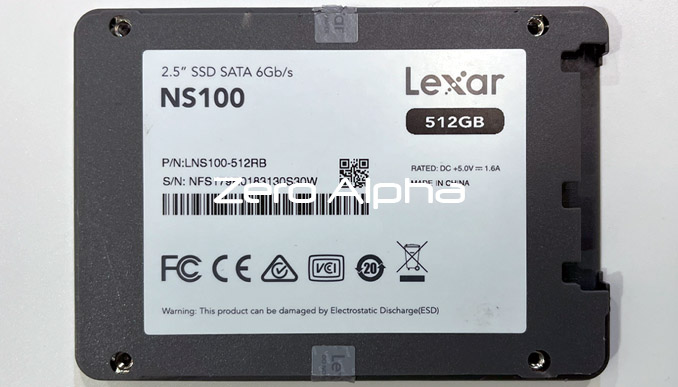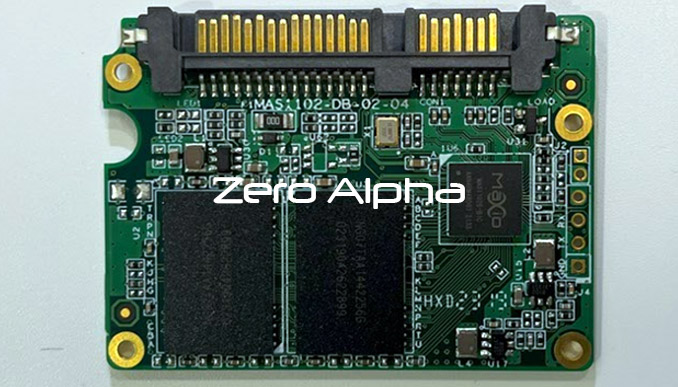Lexar NS100 SSD Sata Data Recovery
At Zero Alpha Data Recovery, we offer professional data recovery for Lexar NS100 SSDs. This 2.5" SATA drive is popular for basic storage upgrades but is known to suffer from controller issues, firmware problems, and sudden failure. If your NS100 is no longer detected or has lost important data, we can help recover it. We also accept mail-in jobs Australia-wide, so you can send your drive to us from anywhere.

Lexar NS100 SSD Common Problems
-
SSD not detected in BIOS or Windows
-
Drive shows 0MB or unallocated capacity
-
Sudden loss of files or system crash
-
Controller or firmware failure
-
Partition becomes RAW or unreadable
-
Drive stuck in read-only mode
-
Freezing or extremely slow performance
-
File corruption during normal use
-
Power-related failure from USB/SATA adapters
-
Inconsistent detection across different systems
MAS1102B Controller Data Recovery

MAS1102B-B1C lexar ns100 ssd sata data recovery
Lexar NS100 256GB SSD Sata LNS100-256RBNA Data Recovery Caselog


Lexar main controller chip is a DM918 which is rebranded chinese chip made by Maxio. It uses Maxio MAS0902 main controller.
It uses Maxio MAS0902 main controller and Yangtze River 3D TLC particles (packaged by Longsys OEM), and has three capacities of 128GB/256GB and 512GB, but unfortunately there is no 1TB.
Kernel Mode
Short circuit J2
Model : Generi Loader SATA Device
Serial : 00000000000000
Firmware : 00000000
Capacity : 0.1 MB (256)

Terminal Output BAUD RATE 921600
DISK_SIZE(3b9e656000), MAX_SEC(1dcf32b0)
max_dies=12
H:12 M:4 L:4 A:0
TMC:100020f,16,8080308,1008,f0f00,8,0,2222
NP NP NP NP
TMC:20f,10014,8080308,1008,f0600,8,0,80004444
TIMING:27,1,1,0,2,1a2097
clr rmp tbl
btlmt init:e,9,5,100,1
Blk:214,189,25,0
----power on:1
RDC_THR=220000
MakeData=11:47:52,Aug 9 2019
thrshd :85,105,115,125,ReadCnt:220000
[C_BK]S:0
clr remap info
====================
later_bad:
[C_BK]E
[QBT]S
Qbt CNT(0)CE(0)BUID(1)
Qbt CNT(1)CE(0)BUID(2)
tbl-cnt(2),End(3)
Q-item1:1a,5e392
Q-item2:5f,2
H_P:0x35f,0xc
H_P:0x1af,0xc
H_P:0xd7,0xc
H_P:0x6b,0xc
H_P:0x35,0xa
H_P:0x50,0xc
H_P:0x42,0xc
H_P:0x3b,0xa
H_P:0x3e,0xc
H_P:0x3c,0xa
H_P:0x3d,0xa
Page Empty:0x3e
BufLeft:4c
r log:1,61,0,ffff,ffffffff
Qbt Invalid Mark
Qbt Query:NG
H:0x0,0x1,0x3e
no vld QBT
rd fail
[QBT]E: 8 ms
[PBT]S
BufLeft:4d
buf cnt:1
#BB
46 76 c0 e3 e4 e6 e7 e8
e9 ea eb
#BadCnt:11,11
QBT:3 SLC:13 Super:0 code:0 spdblk:13 normal:214:500118192
Endurance:1500:80:0:3
80-SLC:189:0 normal:25
scan_stage:00
scan_stage:01
InvTbl1:4
InvTbl1:9
InvTbl1:c
scan_stage:02
TblBid1:8
(0,ffff),(1,3),(2,a),(3,ffff),(4,ffff),(5,ffff),(6,8),(7,ffff),
B_SysInfo:2
InVld#5)
InVld(#)
InVld(#5)
BinSrch:11
[(863,c),(1295,c),(1511,c),(1619,1),(1565,1),(1538,1),(1524,c),(1531,c),(1534,1),(1532,c),(1533,d),(0,0),(0,0),]
B:b,head:1533,
head Err2:597f50,b:1533:1,0
head Err2:597f60,b:1533:1,0
head Err2:597f70,b:1533:1,0
#PBT Assert info:597f40
MKSSD_201000004037850100,Aug 9 2019,11:48:04,DM9343,DCOLCADC
assert
Gsmart
D
Err_Buf2
AST:4,2,4983
-go loader